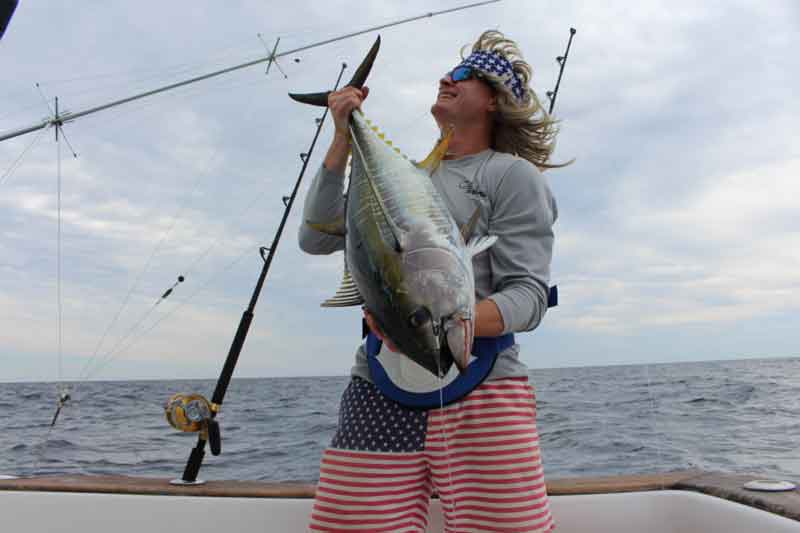Most offshore anglers who go tuna trolling are well aware of the fact that temperature breaks act as offshore structure. Flotsam and bait tend to collect along them, and visible rips may form where the bodies of water collide. So naturally, most anglers will look for temp breaks on the offshore SST charts prior to a trip, and carefully observe the temperature readings once they set out their lines. When the captain finds a temp break, however, the tactics he or she uses — or fails to use — will make a huge difference in their level of success.

- With a break discovered by on-site observation of water temperatures (never trust exact locations determined via SST, since the bodies of water along temp breaks are constantly moving and changing), immediately set a mark on the chartplotter.
- Initiate a wide figure-eight (we mean wide—this may need to be on the order of a half-mile in some cases), and continue hitting marks as you go over major temperature changes. Whichever direction the break is running in, north, south, east, or west, this will allow you to identify it.
- Whenever visible rips are present, troll across them; this is worth altering course for as you establish where the seam of adjoining waters is.
- Once you establish the direction of the break, you can troll in zig-zags across it.
- Never neglect the cool side of a break, even if the color changes from clear to dirty. Surprising though it may be, the edge of cooler, dirtier water is often where yellowfin will be found.
- Bear in mind that this entire time, the goal is to get some strikes and ID what part of the break the fish are on. If you get a strike 100 yards into the warmer side, work 100 yards on the warm side for several minutes. If you get a strike 100 yards on the cool side work that zone, and so on.
For more info on catching yellowfin tuna, also see our three-part series: